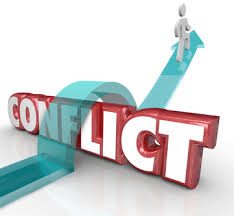 April 2023
April 2023
There is a clear flow to how condo board meetings should be conducted. Boards that follow this established process have shorter, more efficient meetings that result in better decisions. Meetings conducted without following an established process may seem pointless and can drag on for hours without decisions being made. These meetings may seem to be a series of disputes over seemingly trivial matters.

There is an established way to conduct meetings to make them productive and effective. Robert’s Rules of Order and Nathan’s Company Meetings are the most well-known rules for most meetings.
Meeting Chair
 The President has the right to preside over board meetings although some prefer to task this to the condominium manager or another individual. Their primary duty is to enforce the rules of order. This includes ensuring the meeting is properly constituted – notice of the meeting has been delivered to all directors and a quorum (minimum number in attendance to make the meeting legal) are present.
The President has the right to preside over board meetings although some prefer to task this to the condominium manager or another individual. Their primary duty is to enforce the rules of order. This includes ensuring the meeting is properly constituted – notice of the meeting has been delivered to all directors and a quorum (minimum number in attendance to make the meeting legal) are present.
Among larger groups the main purpose of the chair is to facilitate the meeting and to impartial. They do not bring up motions to be voted on but encourage others to do so. The small size of condo boards and way they function makes this impractical.
The chair should be prepared for each meeting. They should be aware of what is to be discussed, anticipate questions that may be raised and ensure relevant documents are available at the meeting. Serving as chair requires effective communication skills. They should always be listening and observing. An important skill is knowing the overall mood of the group.
Ignoring new ideas, shutting down dissenting views and demanding compliance to fabricated rules are not acceptable or standard practices.
Motions
Motions are how decisions are made at a board meeting. For condo board or owner meetings there are standard steps in moving a motion forward. An individual makes a motion. Someone “seconds” the motion signifying it is of importance to more than one individual. The chair then states the motion in clearly understood terms for all and what is to be voted on. A discussion ensues where merits of the motion are discussed before it is put to a vote. Once voted on, the chair announces the result and it is recorded in the minutes.
Agenda
The agenda or order of business for a condo board meeting is intended to provide direction and clarity. Before the meeting convenes attendees should have read the agenda and any supporting documents. Questions about these documents should be asked and answered prior to the meeting. If certain documents are required prior to a vote, these should be requested in advance of the meeting.
The agenda determines priority of items. Changes to the agenda should only be by a vote as it changes this priority.
Allotting a maximum amount of time for each agenda item helps to keep the meeting on track and identifies the importance of any specific item. Items only requiring a vote or brief discussion should not be allotted unnecessary time.
The first item of business is to accept or Approve Minutes of the previous meeting. This makes the previous minutes part of the official record of the corporation. If there is a Management Report presented by the Condominium Manager, that is presented next. It brings directors current with corporation business. Next comes Unfinished Business which refers to business that has been started but not yet completed. New Business comes last and includes anything that doesn’t fit elsewhere on the agenda.
Board Discussions
 The purpose of a “board” is for each individual to bring their own point of view to an agenda item so that the group can agree on a course of action. This can be messy, contentious, and each person must be prepared to be outvoted. Conflict is part of the process and not to be avoided. Boards are most effective when this conflict is properly managed. This means facilitating open discussions with full participation. Disagreements should be presented respectfully. The chair is crucial during this time and should be prepared to take corrective action if a discussion gets too personal or heated.
The purpose of a “board” is for each individual to bring their own point of view to an agenda item so that the group can agree on a course of action. This can be messy, contentious, and each person must be prepared to be outvoted. Conflict is part of the process and not to be avoided. Boards are most effective when this conflict is properly managed. This means facilitating open discussions with full participation. Disagreements should be presented respectfully. The chair is crucial during this time and should be prepared to take corrective action if a discussion gets too personal or heated.
 The chair controls the flow of the meeting, discussions and tone. The general rule is that no individual speaks more than twice on any one motion and that each time is limited to ten minutes. For condo boards, a limit of three minutes may be more practical. Within these parameters, each board member should be allowed to speak if they choose. Discussions should be kept short and to the point. Once a matter is voted on, that matter is resolved and everyone should focus on the next agenda item.
The chair controls the flow of the meeting, discussions and tone. The general rule is that no individual speaks more than twice on any one motion and that each time is limited to ten minutes. For condo boards, a limit of three minutes may be more practical. Within these parameters, each board member should be allowed to speak if they choose. Discussions should be kept short and to the point. Once a matter is voted on, that matter is resolved and everyone should focus on the next agenda item.
Board meetings are how business of the corporation is conducted. Meeting minutes, official records of the corporation, serve as a legal record and method of informing owners of what decisions are made at these meetings. Following established rules and procedures for these meetings is to be encouraged.








